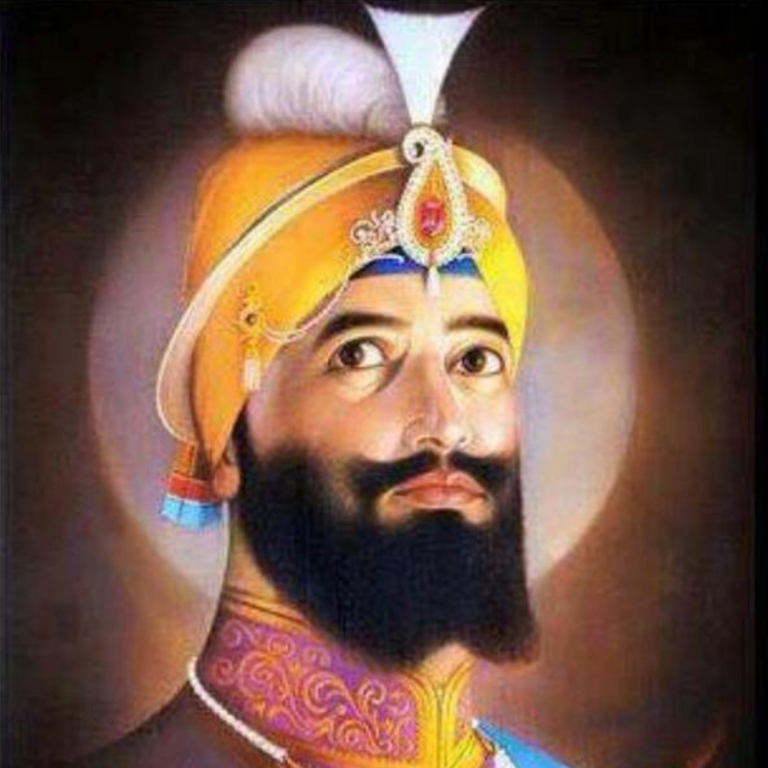
Tagline
Who and What is a Sikh?
The term 'Sikh', derived from the Punjabi language, translates to 'disciple'. Sikhs are devoted disciples of the Divine who adhere to the doctrines and teachings articulated by the Ten Sikh Gurus. The insights encapsulated within the Sri Guru Granth Sahib possess a practical and universal relevance, appealing to humanity as a whole.
"Any human being who faithfully believes in: (i) One Immortal Being, (ii) Ten Gurus, from Guru Nanak to Guru Gobind Singh, (iii) The Guru Granth Sahib, (iv) The utterances and teachings of the ten Gurus and, (v) the baptism bequeathed by the tenth Guru, and who does not owe allegiance to any other religion is a Sikh." (Rehat Maryada, Sikh Code of Conduct)
The Founders or Sikhism


The founder of the Sikh religion, Guru Nanak, was born in 1469. He pro-pagated a message centred on love and understanding while critiquing the superficial rituals prevalent among both Hindus and Muslims. Following his death, the enlightened leadership of this nascent faith was entrusted to nine successive Gurus, culminating with the final living Guru, Guru Gobind Singh, who passed away in 1708.
During his lifetime, Guru Gobind Singh established the Khalsa, a revered order of soldier-saints, symbolising the core Sikh virtues of commitment, dedication, and a strong social conscience. The Khalsa comprises both men and women who have participated in the Sikh baptism ceremony and adhere rigorously to the Sikh Code of Conduct, donning the prescribed physical symbols of their faith. Notable among these are uncut hair—typically concealed under a turban for men—and the Kirpan, a ceremonial sword.
Before his demise in 1708, Guru Gobind Singh proclaimed that the Sikhs need no longer look to a living Guru, designating Sri Guru Granth Sahib as the spiritual successor and the Khalsa as the community's physical successor. He asserted that all wisdom requisite for the spiritual development of Sikhs in their daily lives could be found within the Sri Guru Granth Sahib, which is revered as the Eternal Guru of Sikhs.
This scripture holds a distinctive place within the realm of religious texts; it not only comprises the verses of the Gurus but also includes writings from various saints of different faiths whose ideologies align with those of the Sikh Gurus. Sikhism notably eschews the institution of priesthood, a transformation initiated by Guru Gobind Singh, who perceived that such figures had succumbed to corruption and egoism. Instead, custodians of the Guru Granth Sahib, known as granthi, serve the community.
Any Sikh is permitted to engage with the Guru Granth Sahib in a Gurdwara (Sikh temple) or within their own residence. Moreover, all individuals, regardless of their faith, are welcome in the Gurdwara. Each Gurdwara features a community kitchen, providing free meals to people of all religions—a practice that roots back to Guru Nanak and embodies the fundamental Sikh tenets of service, humility, and equality.
The most significant historical religious centre for Sikhs is Harmandir Sahib (The Golden Temple) located in Amritsar, Punjab, Northern India. While it serves as both an inspirational and historical focal point of Sikhism, it is not mandated as a site of pilgrimage or obligatory worship. All locations housing the Sri Guru Granth Sahib are regarded as equally sacred by Sikhs.
We need your consent to load the translations
We use a third-party service to translate the website content that may collect data about your activity. Please review the details in the privacy policy and accept the service to view the translations.

